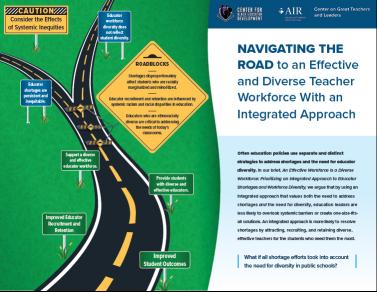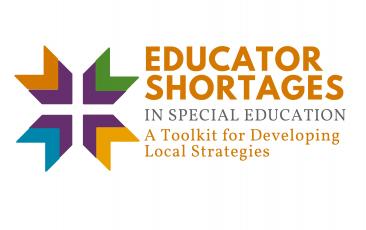Address Shortages and Expand Equity | GTL Center

Take an Integrated Approach to Addressing Educator Shortages and Expanding Equity

States often approach educator shortages, gaps in access to effective educators, and educator workforce diversity as separate problems with separate solutions.
Too often, states resort to disconnected policies and stop-gap solutions to fill vacancies without long-term, systemic strategies to address the interconnected root causes of educator shortages and gaps in diversity and equity.
At the Center on Great Teachers and Leaders, we have worked alongside multiple states to use an integrated approach that considers these challenges together while also combining short-term and long-term strategies to create a comprehensive solution.
Piecemeal vs. Integrated Approaches
- Piecemeal approaches often address educator shortages without considering related impacts on educator diversity or access to effective educators. Tackling each challenge separately overlooks the multiple realities that disproportionately impact students and educators who are marginalized and minoritized.
- Integrated approaches, in contrast, start from understanding the interconnections between these challenges. Integrated efforts are more likely to achieve the desired impact—resolving shortages and expanding equity by attracting, recruiting, and retaining effective and racially marginalized educators for the students who need them the most.
We offer comprehensive, step-by-step planning tools and implementation resources, as well as evidence-based briefs, toolkits, and professional learning materials to help state and district leaders make meaningful, data-driven decisions to address the shortages and equity-gaps unique to their specific context.
Top Resources

Prioritizing an Integrated Approach to Educator Shortages and Workforce Diversity (Briefs, September 2023)
Co-authored with the Center for Black Educator Development, our two briefs highlight three critical realities in education that create the foundation for educator shortages and diversity gaps while offering innovative strategies and examples of integrated educator shortage and diversity efforts across the talent development continuum.

Educator Shortages in Special Education: A Toolkit for Developing Local Strategies
Co-developed with the CEEDAR Center, this interactive tool is organized around the guiding principal that short-term strategies to meet immediate demand must be intentionally paired with long-term, systematic strategies to attract, prepare, and retain effective special education teachers that together create comprehensive solutions. The toolkit includes a Facilitator's Guide and three supporting sets of tools.

Equitable Access Toolkit and Implementation Playbook
Create a strategic, data-based plan for transforming equitable access in your state or district using our stakeholder engagement guide, root-cause analysis workbook, and data review tool. Next, implement your plan successfully using our communication guide, policy coherence and alignment guide, and tool for monitoring the progress of implementation.

Decision Points: Defining, Calculating, and Addressing Gaps in Access to Effective Educators
Explore four key decision points states should consider in measuring equitable access to effective educators. For each decision point, find state and local examples for initial determinations for equitable access policy and reporting, as well as ways states are supporting districts in identifying equity gaps.
Featured Project

National Collaborative on Educator Workforce Shortages and Diversity (2022-2024)
To support states in addressing urgent educator workforce challenges, in 2022, the Center engaged three state teams from Hawai'i, Ohio, and Louisiana to participate in a National Collaborative. This two-year, data-driven facilitated coaching process helped state teams understand the root causes of shortages and gaps in educator workforce diversity and find solutions that are equity-focused and built for sustainability.

Comprehensive Center Network: Cross-State Collaborative on Educator Shortages and COVID-19
In collaboration with Region 1 and Region 9 comprehensive centers, the GTL Center facilitated five peer-to-peer engagements with state teams to identify local challenges related to educator shortages exacerbated by COVID19 and share strategies and opportunities to strengthen the educator workforce.

